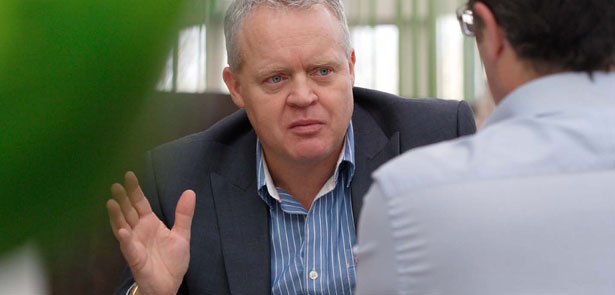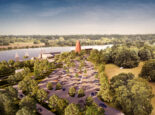A Tale of Two Cities
[prev] …a boss called John Irish – an outstanding retail guru – and one of the things he used to say is that retail is like dancing with elephants; you’re either quick, or you’re dead. It’s about planning too. Peterborough isn’t so bad, but most high streets that have been pedestrianised make it virtually impossible for people to pop in and get to the stores they want to get to quickly and easily. And that’s why a lot of high streets are dying, and it’s made it easy for the internet to just pick up business with the convenience of you being able to go online, order it and have it delivered. One of the companies I invest in, called Style Passport – a fashion brand – you can order the clothing and have it delivered within two hours, so you can literally order it at lunch time and have it delivered ready to go out before you finish work. That kind of response starts to attract people away from traditional retail, if traditional retail doesn’t respond in that way. Retailers need to constantly adapt to what consumers need, and planners need to be aware of how they help or hinder that.’
TRANSPORT
Both cities operate park and ride services, and Peterborough was largely built with the car in mind. Cambridge, however, was not, and its pattern of pedestrianisation is mindbogglingly complex as a result. Some areas in Cambridge city centre – a warren of medieval streets, many of which are one-way – are permanently closed to traffic. Other streets have rising bollards that close to traffic between the hours of 10 am – 4 pm Monday to Saturday, or 9 am – 6 pm every day, depending on where you are, while some are closed 24 hours a day unless you work in the area and qualify for a transponder to automatically lower the bollards, or are a taxi or a bus. Little wonder that the Cambridge University website says: ‘Driving in the city centre takes a while to get used to…’
High rents and access problems can ultimately exclude independents and local retail businesses
While Cambridge hardly looks to be dying in terms of retail, it should not allow itself to become complacent; as the Grand Arcade demonstrates, big names will always be drawn by the city’s prestige, but those high rents and access problems can ultimately exclude independents and local retail businesses, whether there is a demand for their services or not. That potentially drives revenue out of the local economy and risks turning the centre into what anthropologist Marc Augé calls a ‘non-place’ – an anonymous conglomeration of globalised brands with, ultimately, no distinct character of its own.
That may sound alarmist given Cambridge’s popularity as a destination, but the effects on the business landscape are very real. When looking to set up a groundbreaking neurological care centre in the region, Chief Operations Officer of PJ Care, Neil Russell, gave Cambridge serious consideration. On the face of it, it was the obvious choice; Addenbrooke’s and Papworth, globally renowned medical institutions that deal with physical trauma, are literally on the doorstep, each with specialist patients who would benefit from continuing care. But reputation was ultimately outweighed by other factors – primarily those ‘good road networks’ mentioned by Douglas Gyte.
“You’ve got the A47, the A1, all within ten minutes, and that gives you access to London, the north, east and west. That’s part of the thinking”
‘Peterborough is a lot easier to get to than Cambridge,’ says Neil. ‘Because we cover a much wider area than a 20 mile radius – we’re talking 150 miles – it’s about the families being able to come and visit. And their ability to get here is also a large part of why they’ll say yes. If they’d sat on the A11 trying to get into Cambridge, we’d have lost any potential resident before they even pitched up at the door. This site [in Bretton] is perfect – you’ve got the A47, the A1, all within ten minutes, and that gives you access to London, the north, east and west. That’s part of the thinking. Ease of access is important.’ It’s an issue that would make any prospective business think twice.
So, too, is the high cost and low availability of land in Cambridge, not to mention the availability of staff. One difficulty Cambridge faces is that it has no means of gauging the scale of this problem – of the number of businesses who consider Cambridge, but walk away – because there is no equivalent of Opportunity Peterborough overseeing business interest in the city. The last of these issues – staff availabilty – isn’t just a problem for potential new businesses, either, it affects firmly established employers, too. John Bridge comments: ‘Only this morning I was hearing that Addenbrookes Hospital has 10% of the nurses posts that it can’t fill, which is clearly down to the cost of living here combined with the difficulty of travel.’
UNIVERSITIES
One of the reasons why Cambridge has been so successful is very clear to see – the University. As Charles Taylor puts it, the city ‘feels like a university with a few other things going on around it’. What fewer people are aware of is that it actually has two such institutions. Caroline Hyde is director of the Future Business Centre in Cambridge, but prior to this was Business Development Manager at Cambridge’s other university, Anglia Ruskin. ‘What strikes me continually is that we’re lucky having both universities in Cambridge,’ she says, ‘because while nobody can take away from the role that Cambridge University plays on a global level, the work that Anglia Ruskin University does in terms of working with SMEs on a local level, and supporting projects on their doorstep is such a positive asset within the city and the wider county – and in the region. It’s that balance of both of those, and having that… [cont]
















